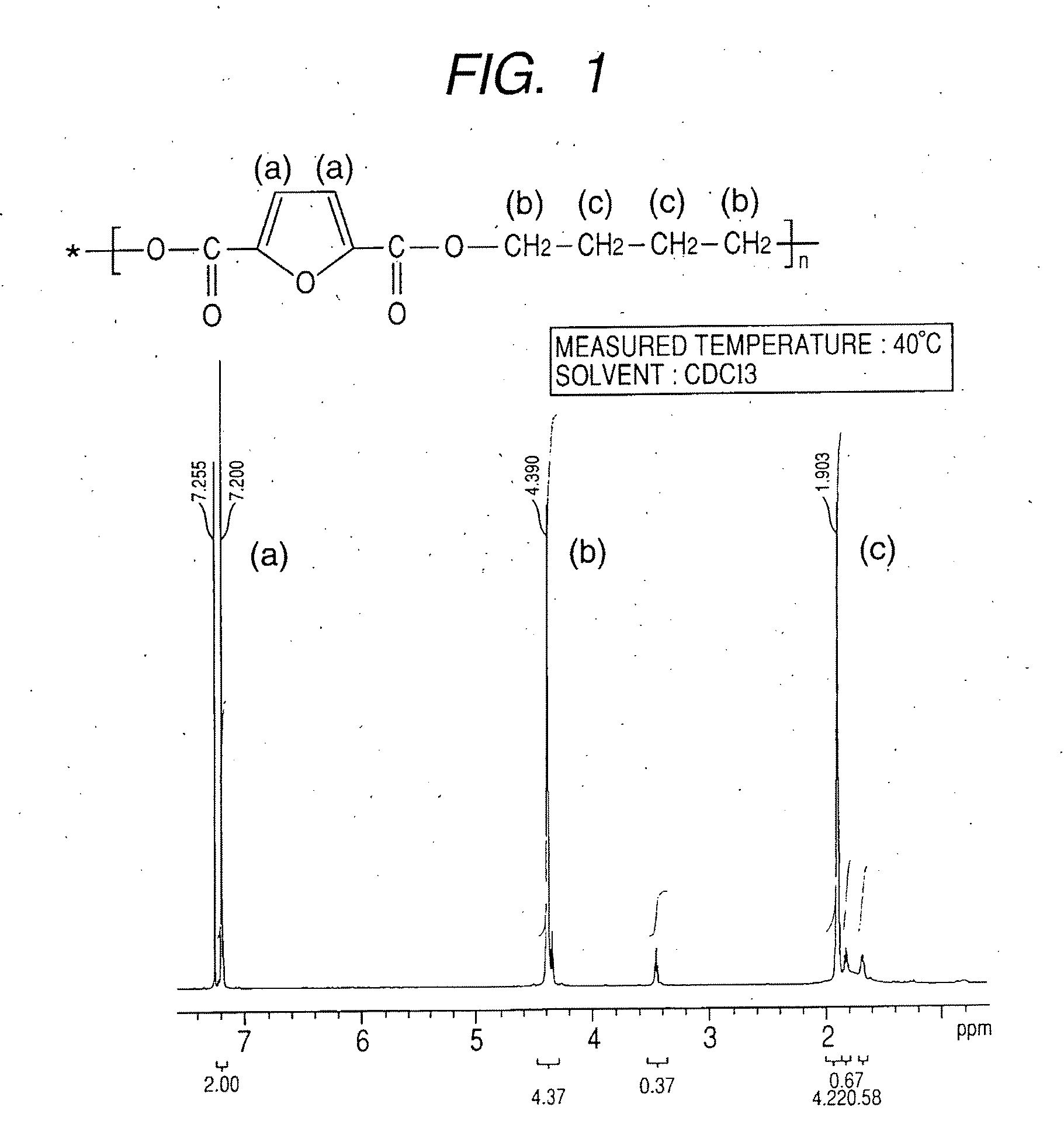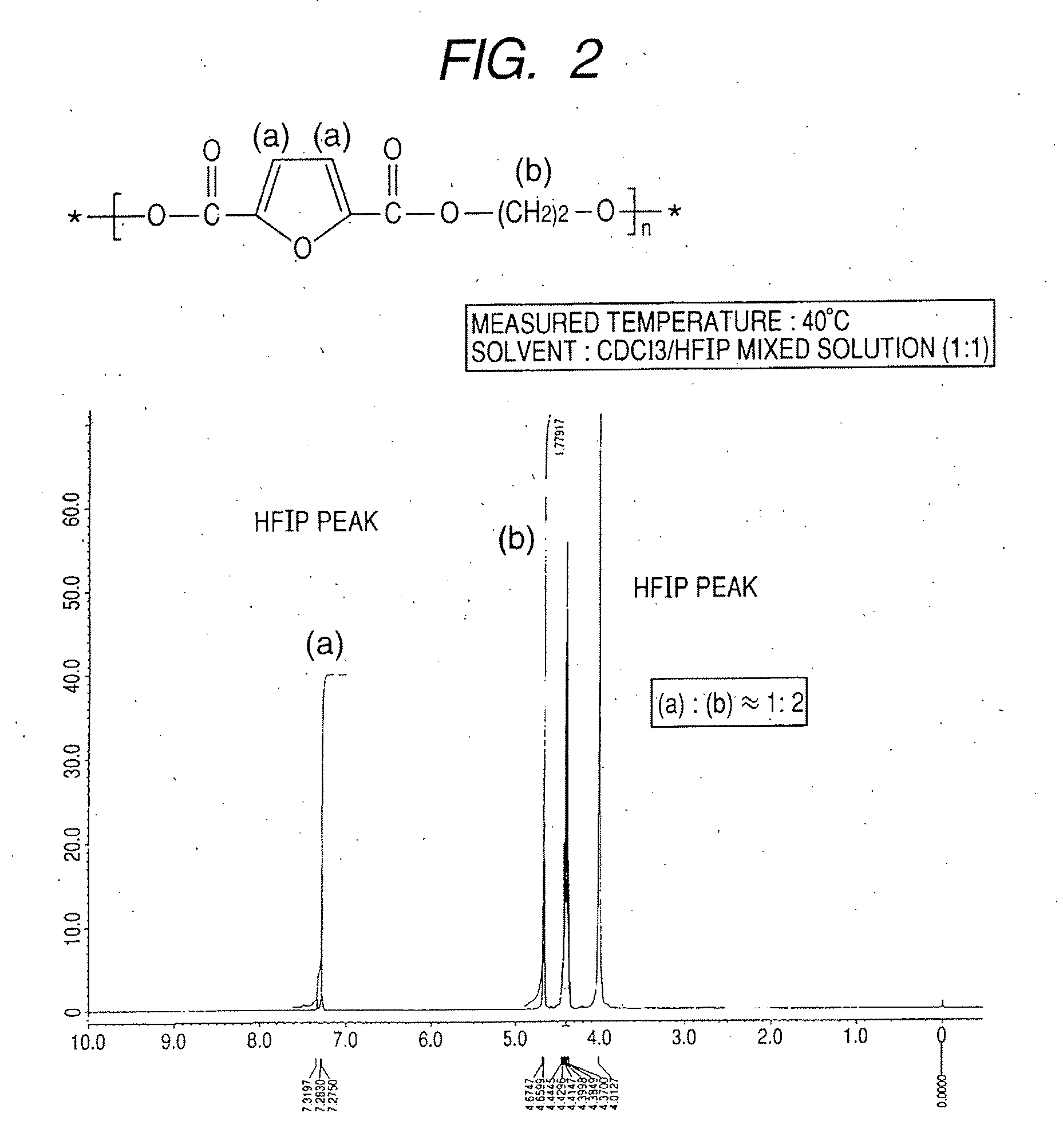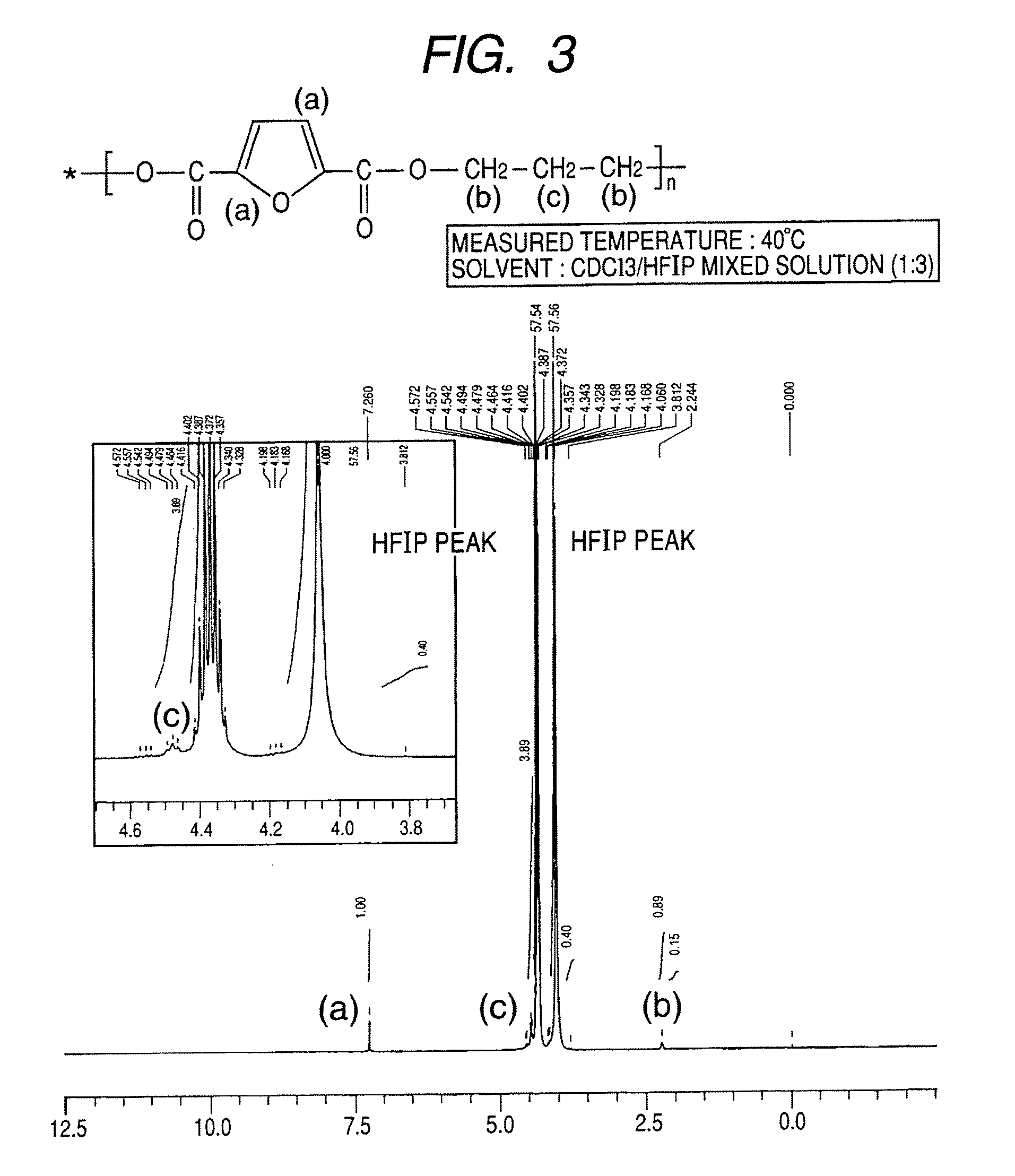Polymer compound and method of synthesizing the same
- Summary
- Abstract
- Description
- Claims
- Application Information
AI Technical Summary
Benefits of technology
Problems solved by technology
Method used
Image
Examples
example 1
Synthesis of polybutylene-2,5-furandicarboxylate
[0075]A 1-L four-necked flask equipped with a nitrogen introducing tube, a fractionating tube-condenser, a thermometer, and a SUS stirring blade was prepared. Into the four-necked flask, 2,5-furandicarboxylic acid (149.9 g), distilled 1,4-butanediol (259.5 g; molar ratio=1:3), a tin catalyst (0.059 wt %), and a titanium catalyst (0.059 wt %) dissolved in toluene were measured.
[0076]In the four-necked flask, stirring was started while nitrogen was introduced, and the flask was immersed in an oil bath at 150° C. to heat a content of the flask. At about an inner temperature of 150° C., effusion of by-product water started with a condensation reaction, and the content was heated to 170° C. over about 4 hours.
[0077]The fractionating tube was changed to a T-tube, and pressure reduction was started. Inside of the flask was adjusted to full vacuum (5 Pa) over about 1 hour, and the reaction was continued at 180° C. for about 390 min under reduc...
example 2
Synthesis of polyethylene-2,5-furandicarboxylate
[0079]A 1-L four-necked flask equipped with a nitrogen introducing tube, a fractionating tube-condenser, a thermometer, and a SUS stirring blade was prepared. Into the four-necked flask, 2,5-furandicarboxylic acid (149.9 g), distilled ethylene glycol (186.2 g; molar Ratio=1:3), a tin catalyst (0.05 wt %), and a titanium catalyst (0.05 wt %) dissolved in toluene were measured.
[0080]In the four-necked flask, stirring was started while nitrogen was introduced, and the flask was immersed in an oil bath at 150° C. to heat a content of the flask. At about an inner temperature of 150° C., effusion of by-product water started with a condensation reaction, and the content was heated to 280° C. over about 4 hours.
[0081]The fractionating tube was changed to a T-tube, and pressure reduction was started. Inside of the flask was adjusted to full vacuum (5 Pa) over about 1 hour, and the reaction was continued at 280° C. for about 390 min under reduce...
example 3
Synthesis of polytrimethylene-2,5-furandicarboxylate
[0083]A 1-L four-necked flask equipped with a nitrogen introducing tube, a fractionating tube-condenser, a thermometer, and a SUS stirring blade was prepared. Into the four-necked flask, 2,5-furandicarboxylic acid (149.9 g), distilled 1,3-propanediol (228.3 g; molar ratio=1:3), a tin catalyst (0.05 wt %), and a titanium catalyst (0.05 wt %) dissolved in toluene were measured.
[0084]In the four-necked flask, stirring was started while nitrogen was introduced, and the flask was immersed in an oil bath at 150° C. to heat a content of the flask. At about an inner temperature of 150° C., effusion of by-product water started with a condensation reaction, and the content was heated to 230° C. over about 4 hours.
[0085]The fractionating tube was changed to a T-tube, and pressure reduction was started. Inside of the flask was adjusted to full vacuum (5 Pa) over about 1 hour, and the reaction was continued at 230° C. for about 390 min under re...
PUM
| Property | Measurement | Unit |
|---|---|---|
| Temperature | aaaaa | aaaaa |
| Temperature | aaaaa | aaaaa |
| Temperature | aaaaa | aaaaa |
Abstract
Description
Claims
Application Information
 Login to View More
Login to View More - R&D
- Intellectual Property
- Life Sciences
- Materials
- Tech Scout
- Unparalleled Data Quality
- Higher Quality Content
- 60% Fewer Hallucinations
Browse by: Latest US Patents, China's latest patents, Technical Efficacy Thesaurus, Application Domain, Technology Topic, Popular Technical Reports.
© 2025 PatSnap. All rights reserved.Legal|Privacy policy|Modern Slavery Act Transparency Statement|Sitemap|About US| Contact US: help@patsnap.com



